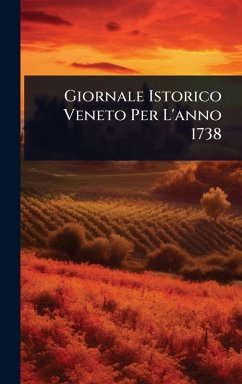Giornale Istorico Veneto Per L'anno 1738 offers a detailed historical account pertaining to Venice and the surrounding Veneto region during the year 1738. The anonymous author meticulously chronicles the founding of temples, the relics they house, and the venerated saints whose bodies are preserved within. This historical journal provides invaluable insights into the religious, social, and cultural landscape of 18th-century Venice. Readers interested in Venetian history, religious studies, and the historical significance of sacred sites will find this an illuminating resource. The detailed descriptions offer a glimpse into the past, preserving the memory of important religious and cultural landmarks. This work has been selected by scholars as being culturally important, and is part of the knowledge base of civilization as we know it. This work was reproduced from the original artifact, and remains as true to the original work as possible. Therefore, you will see the original copyright references, library stamps (as most of these works have been housed in our most important libraries around the world), and other notations in the work. This work is in the public domain in the United States of America, and possibly other nations. Within the United States, you may freely copy and distribute this work, as no entity (individual or corporate) has a copyright on the body of the work. As a reproduction of a historical artifact, this work may contain missing or blurred pages, poor pictures, errant marks, etc. Scholars believe, and we concur, that this work is important enough to be preserved, reproduced, and made generally available to the public. We appreciate your support of the preservation process, and thank you for being an important part of keeping this knowledge alive and relevant.
Bitte wählen Sie Ihr Anliegen aus.
Rechnungen
Retourenschein anfordern
Bestellstatus
Storno








